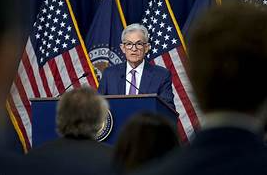Fed officials are holding off on rate cuts while monitoring inflation trends.
On Wednesday, the Federal Reserve announced it would keep its key interest rate unchanged as it continues to battle elevated inflation rates, which have been squeezing U.S. businesses and consumers. In its statement, the central bank noted that while economic activity “has continued to expand at a solid pace,” inflation remains above the Fed’s 2% target. However, the central bank also observed “modest further progress” toward that goal.
Although inflation has eased over the past year, it still remains high. The Fed now forecasts only one rate cut in 2024, a shift from its previous projection of multiple cuts. The reduction in inflation in recent months has led some economists to speculate that the Fed might make a rate cut before the general elections in November.
The Fed’s main tool for controlling inflation is its management of the federal funds rate, which in turn influences borrowing costs throughout the economy. For the past year, the Fed has kept the rate at approximately 5.5%. By maintaining high interest rates, the Fed hopes to reduce consumer demand, which could help slow price growth. This approach has led to APRs above 20% on major credit cards and mortgage and auto loan rates beginning at 7%.
The Federal Reserve’s strategy seems to be showing signs of success. The Bureau of Labor Statistics reported that inflation for May was 3.3%, a slight decrease from 3.5% in April and lower than analysts’ expectations. Notably, inflation did not rise at all on a monthly basis, marking the first time this has occurred since July 2022.
Despite this progress, Fed officials have indicated that they are not rushing to lower interest rates yet. They prefer to see continued positive inflation data before making any changes. Neel Kashkari, president of the Federal Reserve Bank of Minneapolis, emphasized that “many more months of positive inflation data” are necessary to feel confident about reducing rates.
Economist Joe Brusuelas, however, believes the trend of slowing price growth will likely persist through the summer, and a rate cut could happen as soon as this fall, depending on further data.

